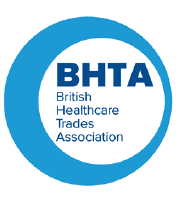A shocking statistic has shown that vast majorities of people living within the UK are overweight.
Data from local authorities show that 64% of adults are overweight or obese in England. 1
So how does it feel to be overweight?
Many studies have shown that obesity can lead to many worrying psychological issues such as; feelings of depression, anxiety, low-self esteem and body dissatisfaction, all of which can result in the individual having a low quality of life. 2
Obesity can also cause major implications over an individual’s physical health; some of these health problems are extremely dangerous and could potentially lead to life threatening conditions, such as bowel and breast cancer, coronary heart disease, type 2 diabetes and a stroke, along with a number of other serious health conditions.3
Being a plus-sized individual may also cause problems in relation to the social aspects of someone’s life, having low self – esteem and not feeling happy in your own skin could cause feelings of anxiety.
A new study shows that obese individuals with social anxiety related only to their weight may experience anxiety as severe as individuals with social anxiety disorder (SAD). 4
The aforementioned really shows the harsh reality to which individuals who are struggling with their weight are faced with, and unfortunately there is no quick fix to resolve the situation. A lifestyle change may be needed in order to reduce the risk and suffering caused by obesity and taking preventative measures to ensure the condition does not worsen is also an important factor.
Diet and Exercise
When caring for someone who is overweight an assessment plan will need to be put into place in order to ensure that the patient is receiving the best possible care. Interventions that may arise should include an appropriate diet for the patient and the correct amount of exercise.
Evidence has suggested that providing advice and support on both exercise and diet together improves positive outcomes for the individual. 5
Taking care of the skin
Skin will often breakdown in larger patients due to increased skin to skin contact caused by skin folds, the force that this contact can cause will increase the likelihood of pressure ulcers occurring; reduced mobility due to obesity may also cause the skin to breakdown, as well as monitoring these high risk areas daily it is equally important to have some form of specialist equipment in place in order to reduce the risk, these items may include a specialised bariatric mattress, bariatric cushion and bariatric bed. 6
Although obesity is a major problem within the UK there is always help available and with the correct help individuals who are overweight will start to reap the benefits of living a healthier happier lifestyle.
Bibliography
1 Sharman, L (2014) Council data shows 64% of adults are overweight or obese [online] Available at: http://www.localgov.co.uk/Council-data-shows-64-of-adults-are-overweight-or-obese/35535 [Accessed 19/07/2016]
2 Anon (2014) Consequences of obesity [online] Available at: https://www.more-life.co.uk/Default.aspx?PageName=Consequences+of+Obesity [Accessed 19/07/2016]
³ NHS (2016) Obesity [online] Available at: http://www.nhs.uk/Conditions/Obesity/Pages/Introduction.aspx [Accessed 26/07/2016]
⁴ Lifespan (2011) Obese people an suffer from social anxiety disorder due to weight alone [online] Available at: https://www.sciencedaily.com/releases/2011/04/110413111321.htm [Accessed 26/07/2016]
⁵ NHS (2016) Treating adult obesity through lifestyle change interventions [online] Available at: http://www.noo.org.uk/uploads/doc/vid_5189_Adult_weight_management_Final_220210.pdf [Accessed 16/08/2016]
⁶ Cooper, A (2006) 6 Common Bariatric Skin Concerns Quality improvement organization.
About the author – Ray Booth
Ray Booth is Research & Innovation Director at Select Medical. He has been involved in the pressure care equipment industry for over 20 years, and has created a wide range of well-designed alternating air pressure mattress systems for use in hospital, hospice and community healthcare sectors.








